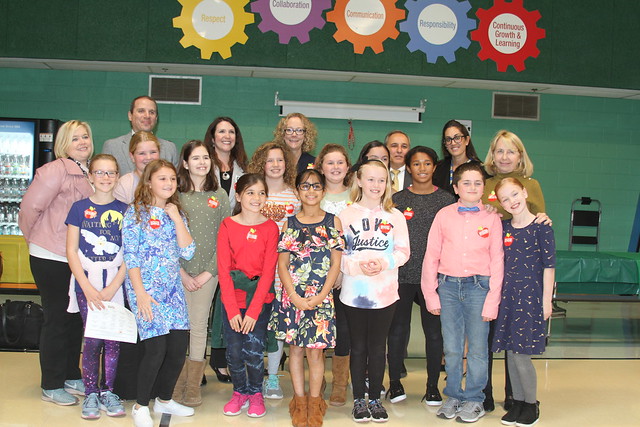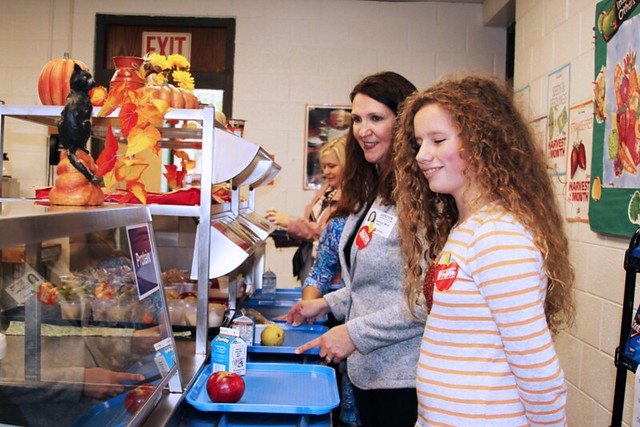
One of my fondest childhood memories was helping my grandma tend to the fresh fruits and vegetables in her garden. After a morning’s work outside in the sunshine, the fresh-picked corn was a feast for the taste buds and a sweet reward for our hard work. Working alongside my grandma taught me many important lessons – notably, that food on the table across the nation is a result of the dedication and effort of America’s farmers.
As Administrator, I’m reminded of my early experience when I am able to get out of the office and see our programs in action in local communities – harnessing the nation’s abundance and the hard work of farmers to help people get the food they need.
Just recently, I joined 5th graders from the Roderick School in Wrentham, Massachusetts for lunch to celebrate National School Lunch Week. Wrentham Food Service Director Judy White recognizes the value of listening to her student customers and using their feedback to run a great program. The 13 students of Wrentham’s 5th Grade Lunch Committee serve as advisors to Ms. White, meeting regularly to share what they like and what they’d like to see on the menu. Recognizing their responsibility to their fellow students, they have a lot to say about their school lunches – and it is very positive.
The Committee was eager to share their thoughts with us at Roderick over a delicious lunch of roasted chicken, butternut squash, corn bread, local farm apples, pears, and milk. The students particularly raved about the roasted chicken, but the whole meal was worth raving about! Secretary Perdue has directed all of us to make customer service a priority at USDA, and I couldn’t have found a better model than the one in Wrentham.
Thinking back on the farm back home and the school we visited underscores to me the importance of helping kids understand early on where food comes from – and how it gets to the table. USDA’s Farm to School Program is a great way to make that happen, helping healthy eating habits take root early by introducing kids to fresh, locally-grown produce, connecting them with the skills and rewards of growing food, and encouraging some to consider a future in agriculture. More than 42,000 schools across America now participate in Farm to School, offering a variety of learning opportunities from school gardens to farm field trips. Farm to School also encourages schools to buy fresh local products that support the area’s farm economy.
USDA has made active support for Farm to School a priority. Our Farm to School Grants Program has invested nearly $40 million since the program began in 2013 – including a record $9.4 million in 2019. The grants have funded more than 560 rural and urban-area projects in all 50 states and many US territories. And it’s having a significant impact across the country. In locations with robust farm to school programs, more children participate in school lunch and less food is thrown in the trash, according to the most recent USDA Farm to School Census.
Just as important, F2S allows thousands of children across the country to meet a farmer or visit a farm. Their experience growing up may differ from mine, but I’m proud to work at an agency that makes these “growing opportunities” available to children no matter where they live. And I think Grandma would approve.

